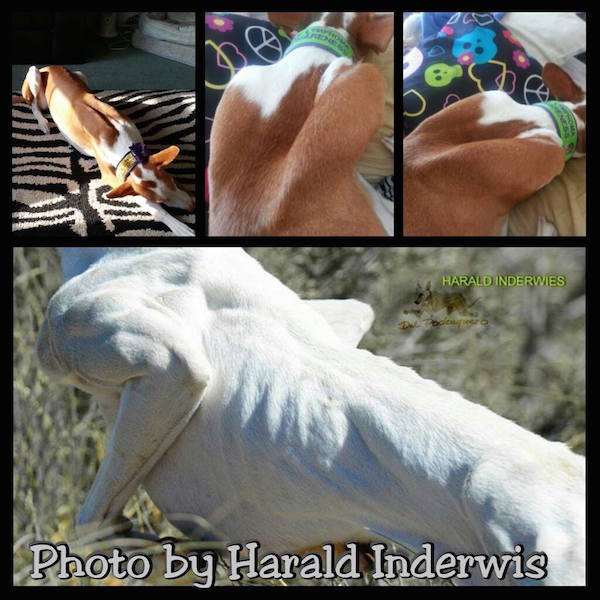
News flash (to no one:) Dogs are adapted to run. For that reason, they don’t have the need to lift, push, pull or swing their arms the way we do.
Neither are their collarbones attached to the rest of their skeletons with bones like ours which is why some people say that canines have “floating shoulders.” Strictly speaking, this isn’t true. The collarbones are positioned with ligaments and muscles that give them what they need most: Speed, agility, and an ability to increase stride length.
Rudimentary clavicles are made mostly of cartilage (and don’t show up on x-rays) that are shaped like oval plates and are about a centimeter or less in length, and a third as wide. Interestingly, they are among the first bones to ossify in a dog fetus. In fact, PH McCarthy and AK Wood studied fifty dogs of ten different breeds back in 1988 and found that the clavicle ossified in 86% of the dogs, and in fetal Beagles, an ossified clavicle was always found by 30 – 35 days, the only bone in the appendicular skeleton to have done so. This underscores the importance of a part of the dog anatomy that provides muscle stability and protect the nerves and blood vessels that supply the all important front legs.
Ibizan Hounds are a fine example of this shoulder structure. The breed’s unique hunting style relies on shoulder flexibility enabled by loose and detached collarbones. As Alex Mitchell Lynch mentioned when sharing this photograph of her dog, “Enya,” with us back a while back, there is a space between the shoulder blades and it’s not tied down under a mass. Ibizan Hounds lounging about can have a space behind the scapula that one can put their hand in, and photos of dogs hunting in Mallorca, it’s easily seen where they have pulled their elbows back so far in the leap that their elbow is above the topline!

Humans clavicles are not attached with bone either. They are attached via ligaments and muscles just like dogs. No bone attaches to another bone via bone.